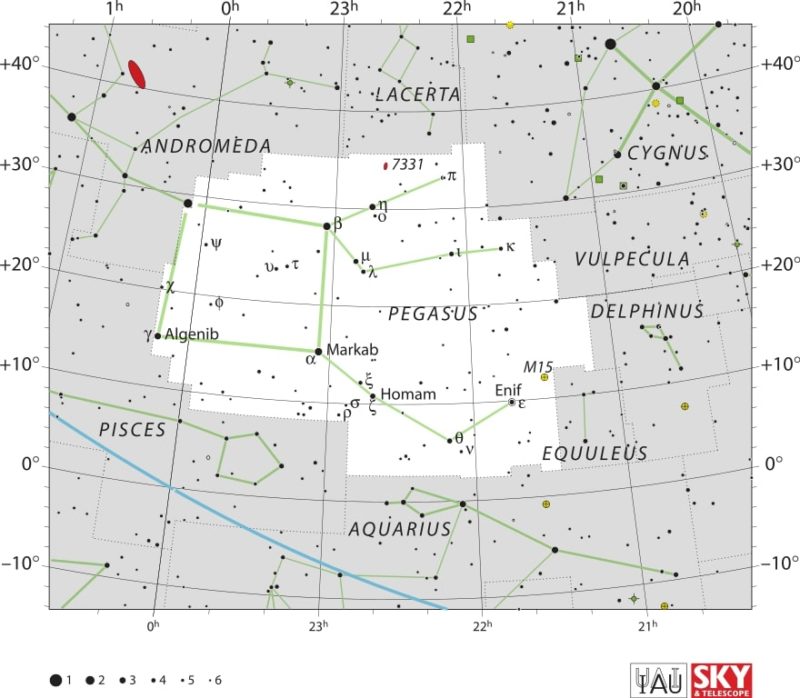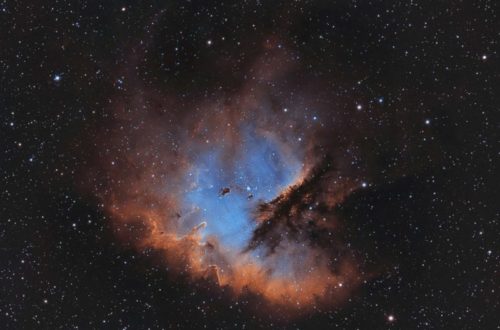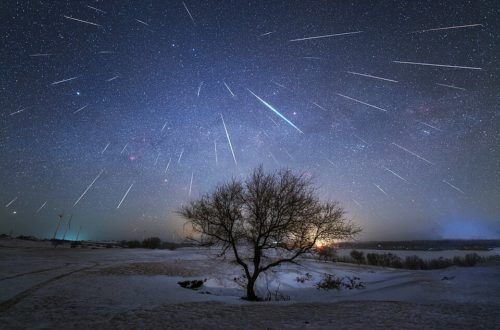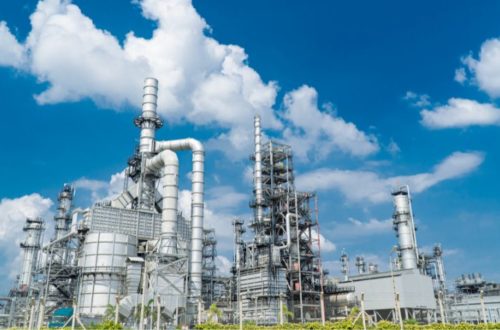July Pegasid Meteor Shower Overview

The July Pegasids are an annual meteor shower that peaks around the 10th of July each year. These meteors originate from the direction of the constellation Pegasus. They move extremely fast and are pretty dim, so you’ll want dark skies and low light pollution if you want to catch them at their best.
In comparison, the shower’s activity is pretty modest. At its peak, it produces around 3 meteors per hour. While not as prominent as larger meteor showers, it still offers a unique opportunity for stargazers to witness a celestial event during the summer months.
These meteors are associated with the comet C/1979 Y1 (Bradfield). This connection means they are part of the comet’s debris stream. Though relatively obscure, the July Pegasids provide a fascinating window into the nature of the smaller meteor showers.
When to See the July Pegasid Meteor Shower
Knowing when to look for the July Pegasids is essential to making the most of this unique annual meteor shower. With a little advance planning, you can see the most meteors.
The July Pegasids are active between July 4 and 17, with a peak around July 10. During this time, meteor rates reach about 3 per hour.
Even though the shower only peaks for a short time, its activity lasts for nearly two weeks. Even outside those peak dates, you can still catch meteors, just not as frequently. The peak typically spans only one night of central activity.
Make sure to save these dates to have a deeper, more enriching viewing experience! The added weeks give you plenty of time to go, but that peak is still the featured attraction.
Factors Influencing Visibility
To see the July Pegasids, you should brush up on a few key points that affect visibility. From atmospheric conditions to environmental factors and moon phase, all these factors determine the outcome of your meteor shower adventure.
Atmospheric Conditions
Humidity, ground temperature, and air quality all have a direct influence on how well you can see meteors. High humidity can create a hazy sky that greatly diminishes visibility. Cooler temperatures tend to stabilize the air and improve visibility.
Air quality plays a big role—polluted skies absorb and scatter light, washing out the faintest meteors. Increased clouds and precipitation are a major hurdle. Even scant clouds will likely block the view, and the presence of rain at destination rules out all possibility of a sighting.
Paying close attention to local weather forecasts is critically important. Don’t miss your chance—clear, crisp nights make for the best opportunities, so be prepared!
Environmental Considerations
Third, local geography absolutely affects visibility. Urban areas suffering from excessive light pollution prevent almost all stars and meteors from being visible. To maximize your viewing experience, look for higher elevations or more rural locations with wide-open skies.
High-elevation landscapes, such as mountains or canyons, eliminate atmospheric obstructions and add to your viewing angle toward the radiant. For the July Pegasid meteor shower, places with little localized cover—such as wide-open plains or open mountaintops—offer the best views.
Impact of Moon Phase
Lunar interference has a dramatic impact on meteor visibility. The July Pegasids are best observed during a new moon or crescent phase. Less moonlight means you can spot fainter meteors more easily.
Coordinate your observation in advance. Using lunar phases calendars, plan your trip so you can observe during darker skies.
Conclusion
The July Pegasids are a special opportunity to connect with and learn from your night sky. These meteors, while not as famous, offer a special beauty with their fast flashes and quiet luminescence. Just imagine the experience under clear skies, little to no light pollution, and perfect timing—viewing becomes all the more worthwhile. Whether you’re a long-time amateur astronomer or new to the field, they provide delightful wonders and an inspiring sense of discovery.
Making the effort to experience this meteor shower creates priceless opportunities to pause and simply enjoy the beauty and wonder of the universe around us. Pull up a comfy lawn chair, go outside, and watch the universe wake up right over your head. Capture the moment, bring your friends along for the ride, or simply take it all in and appreciate the beauty of nature.
Frequently Asked Questions
What are the July Pegasids?
The July Pegasids are a pretty minor meteor shower, peaking around 3 meteors/hr, but they are an annual event in early July. They take their name from the constellation Pegasus and are notable for their meteors which are typically faint but very speedy.
Where should I go to observe the July Pegasids?
To enjoy the show, head to somewhere dark and open, far from city lights. Rural areas or parks where light pollution is minimal are always best.
How many meteors can I expect to see?
The July Pegasids Meteor activity from this shower is rather low, yielding only about 3 meteors per hour at peak.
What factors affect visibility of the July Pegasids?
Light pollution, weather, and moonlight are the three big ones. Cloudy skies and bright moonlight greatly reduce visibility, so clear, dark skies without ambient light are best.
Can I photograph the July Pegasid Meteor Shower?
Yes! Take it with a DSLR camera with a wide-angle lens on a tripod. You’ll get the best results if you set a long exposure time and point toward the constellation Pegasus.
See also:
- Previous meteor shower: June Bootid Meteor Shower
- Next meteor shower: Piscis Austrinid Meteor Shower
Would you like to receive similar articles by email?





